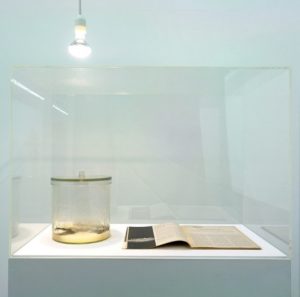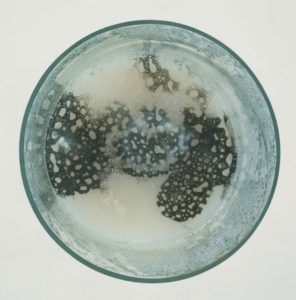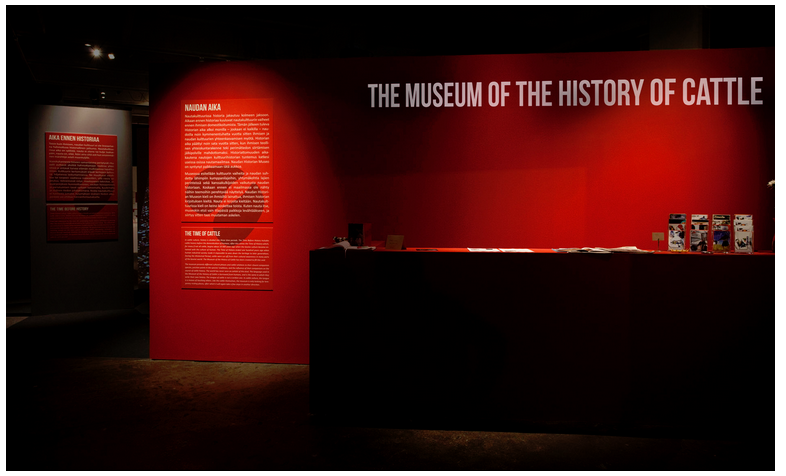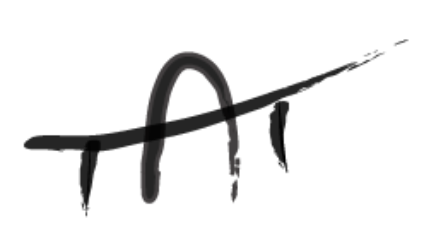Tue Greenfort
- Bio
- 1973 Denmark
- lives and works in Berlin
- Description of work
- Minimal eco-materialism, giving a simple conceptual and visual prompt to ponder in greater depth. He also does larger scale public art projects Such as one done at a closed water treatment facility
- Insists work is not eco art, but consistently aims to mess with the understanding that we are superior beings, apart from the rest.
- Book works
- Exceeding 2 Degrees– thermostat, hydrograph on table. Plastic sheets, donation
- PET Flasche– water bottle, water, production costs in resources (“shrunken heads”)
- Other interesting work
- From Petroleum to Protein (2007) “displays – in a classically didactic showcase – a round glass container where dark yeast is growing on paraffin. A 1965 edition of Scientific American explains the process: under optimal conditions the fungus transforms the paraffin into a protein-containing substance. During the 1960s British energy corporation BP had the vision of mass-producing meat substitutes for regions with starving populations from paraffin, a waste product of diesel production. The idea of opening up this new market segment was abandoned when the first oil crisis hit in 1973.” Description from http://www.koeniggalerie.com/exhibitions/1801/tue-greenfort/.
I find this interesting because of its direct relationships between petroleum, energy and protein. It was a promise of solution yet abandonment due to economics. I wonder what the byproducts are and if it is ecologically sustainable. Still there are many awareness expanding concepts and metaphors such as the use of yeast that makes our intoxicating beer and wine and the whole definition of “economy”. The web page also points out how it is common today to do the reverse, using food to make fuel oil, a controversial practice.


From Petroleum to Protein (2007)
Terike Happoja
- Bio
- 1974 Finland
- Based in New York
- Represent Finland at the 2013 Venice Biennale
- 2006 as a Master of Fine Arts and prepares a doctorate degree
- 2004 Performing Arts and Sciences in Theater Art, studied audio and lighting technology for which she has completed a Bachelor’s Degree
- Description of work
- Explores otherness, “selfless” aspects of art and perception. Interested in the micro and macro relationships with nature created by new scientific tools of imaging. Art is about emerging consciousness and expanding perception. Eco-conscious equivalence is our reality
- Book Works
- Succession: Face plant micro biome “self” portrait video
- Moon shape , 1 % known , wilderness
- Dialogue: Tree, bench, visitors, CO2 sensor, lights symbiosis, reform and “other” being rights
- Community: infrared video cooling of animal corpses, projected life size on the floor, death and reorganizing of matter. No singularity and independence of organism.
- Succession: Face plant micro biome “self” portrait video
- Other interesting work
- The Museum of The History of Cattle (with Laura Gustafsson). Haapoja explains, “The focus of our research is to understand how the lifeworlds of individuals have changed over time and how historical events may have been interpreted or perceived by non-human beings.” Quote from: https://creativeecologies.ucsc.edu/demos-haapoja/
I like the use of a Museum motif for this work, which chronicles bovine history and “culture” from a time before humans, through human dominance, and post-human. It contains artifacts and relates a non-human-centric narrative.I find this particularly interesting because it is so similar to the Ancient perspectivism ontology of the Pacific Northwest Native Americans in which the viewed other animals as tribes with their own chiefdoms and culture.

The Museum of The History of Cattle (2013)
